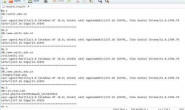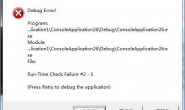static NSString *TableSampleIdentifier = @”TableSampleIdentifier”;
UITableViewCell *cell = [tableView dequeueReusableCellWithIdentifier:TableSampleIdentifier];
if (cell == nil)
{
cell = [[UITableViewCell alloc]initWithStyle:UITableViewCellStyleDefault reuseIdentifier:TableSampleIdentifier];
UITableViewCell *cell = [tableView dequeueReusableCellWithIdentifier:TableSampleIdentifier];
if (cell == nil)
{
cell = [[UITableViewCell alloc]initWithStyle:UITableViewCellStyleDefault reuseIdentifier:TableSampleIdentifier];
//在添加cell时添加边线框
UIView *backView = [[UIView alloc] initWithFrame:cell.frame];
backView.layer.masksToBounds = YES;
backView.layer.cornerRadius = 1.0;
backView.layer.borderWidth = 1.0;
backView.layer.borderColor = [[UIColor lightGrayColor] CGColor];
[cell addSubview:backView];
}
NSUInteger row = [indexPath row];
cell.textLabel.text = [[_chapterList objectAtIndex:row]objectForKey:@”type_name”];
return cell;
这是数据源内代码,向高手们求指导,每次调用[self.tableview reloadData];后内存不断上涨。(ARC环境下)
解决方案
30
看起来还是没问题,你有没有把僵尸对象打开




